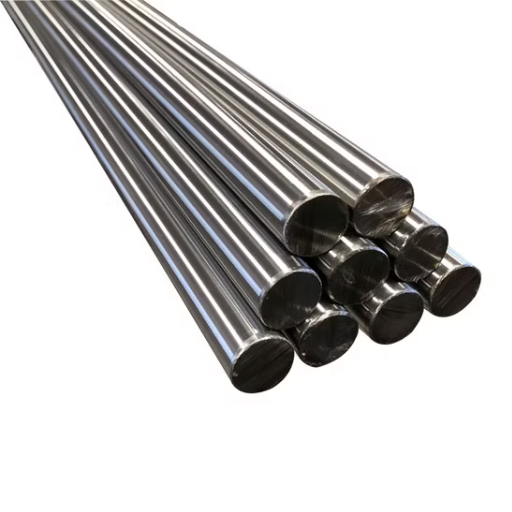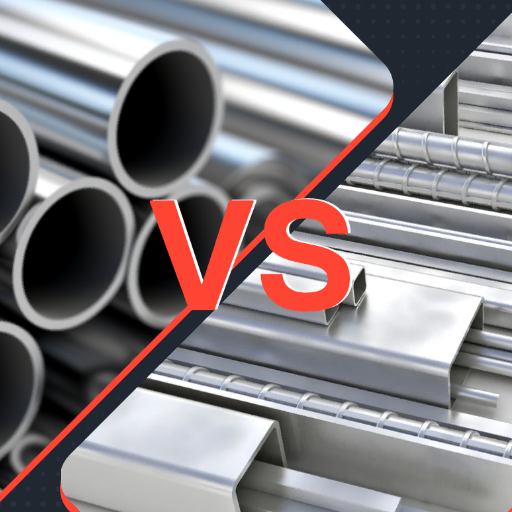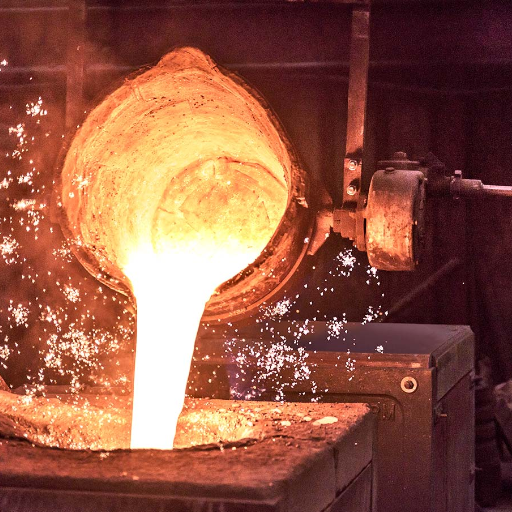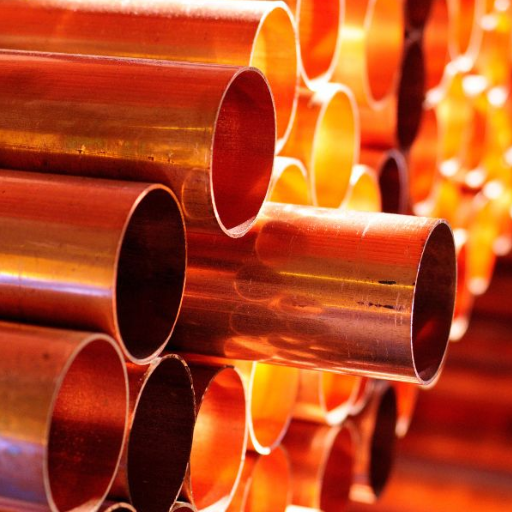For anyone involved in steel fabrications, discerning the subtle differences between hot and cold rolled steel becomes, hence, essential for proper material selection. The differences in the attributes imparted to the steels by the two processes make them suitable for various applications in construction, automotive, manufacturing, etc. A whole range of issues is usually considered while selecting between hot and cold rolling, with performance, finish, cost, and durability being the major ones. This article tries to lay bare the basic differences between hot and cold rolled steel so that the reader can be more aware and make an informed decision. Whether you are a professional engineer, a contractor, or even an avid DIYer, this guide attempts to elucidate the intricacies of these two processes so that the choice of steel for your particular needs becomes clear.
What is Cold Roll and Hot Roll?
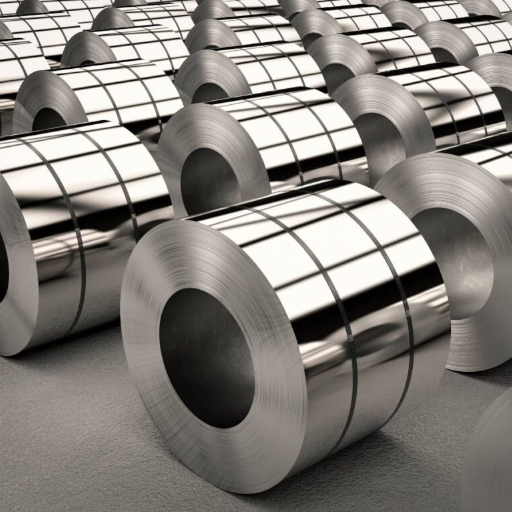
Processing for hot-rolled steel takes place at a temperature higher than the steel’s recrystallization point, usually above 1,700°F. Such elevated temperatures make the steel easier to shape and form. This technique suits the fabrication of large structural components for which exact dimensions and a super smooth finish are not required. The surface finish tends to be a little rough, and shape or size cannot be held to high-tolerance values, of course.
Cold rolling proceeds with additional treatments at room temperature on the hot-rolled steel. This extra step achieves surface finishing, strength, and dimensional tolerances. A smooth finish is desired for things that require tight tolerances: automotive parts, furniture, or perhaps appliances.
Definition of Cold Rolled Steel
Hot-rolled steel is deformed under tightly controlled conditions at or near ambient temperature to produce cold-rolled steel, thereby enhancing mechanical properties and surface finish. The process consists essentially of passing the hot-rolled steel through rollers under close control of the cold deformation to increase tensile strength and yield strength. The resulting final product has much reduced internal stresses, better dimensional accuracy, and a more uniform surface finish than hot-rolled steel.
Cold-rolled steel, for example, is used when consistent thickness, surface finish, and hardening of aesthetic appeal are a must, such as in the manufacture of Home Appliances, automotive body panels, and precision components. Cold-rolled steel is very important since it is preferred over hot-rolled steel for the manufacture of components and industries that need great build quality for resistance and performance.
Definition of Hot Rolled Steel
Hot rolled steel is a kind of steel manufactured at high temperatures, usually above the recrystallization temperature of the material, about 1,700°F (926°C). It involves heating steel slabs or billets in furnace and passing them through heavy rollers to shape the product into steel sheets, bars, or other desired forms. The heating of steel, besides making it more pliable, also lowers the potential of strain hardening. Conversely, the thickness of the steel could vary, and the surface finish gets affected by the cooling and shrinkage after rolling. Heavy-duty structural beams, railroad tracks, and components of heavy machinery- largely used in construction, automobile, and manufacturing industries- are common uses of hot rolled steel, where highly finished surfaces are not a prerequisite but durability and malleability are.
What is the Difference Between Hot Rolled and Cold Rolled Steel?
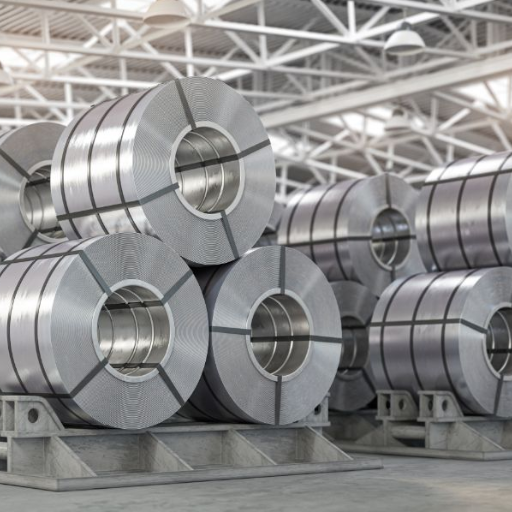
Steel manufacturing technology holds the key to determining the quality and properties of the steel produced. Hot rolling and cold rolling are the usual practices undertaken according to production requirements. So, how do these processes differ? And how do these variations affect their practical application? This section will go through the significant differences between hot-rolled steel and cold-rolled steel.
Compare the Differences: Hot Rolled and Cold Rolled Steel
|
Key Point |
Hot Rolled Steel |
Cold Rolled Steel |
|---|---|---|
|
Processing Temperature |
Above recrystallization temperature |
Below recrystallization temperature |
|
Surface Finish |
Rough, scaled surface |
Smooth, polished surface |
|
Dimensional Precision |
Less accurate tolerances |
High dimensional accuracy |
|
Strength |
Lower due to cooling process |
Higher due to strain hardening |
|
Flexibility |
More malleable, easy to work with |
Less malleable, more rigid |
|
Cost |
Generally cheaper |
More expensive |
|
Applications |
Structural components, tracks |
Precision parts, surface-critical items |
|
Internal Stresses |
Minimal |
Higher internal stresses |
|
Sizes Available |
Larger, bulk sizes |
Limited to smaller sizes |
|
Grain Structure |
Coarse |
Fine |
Cost Differences: Hot Rolled vs Cold Rolled
Price variations between hot rolled and cold rolled steel are basically a result of manufacturing processes. Hot rolled steel is usually less expensive because it takes a simpler manufacturing route, requiring less precision and energy expenditure. The metal is elevated above its recrystallization temperature and rolled into its desired shape without delay for cooling or reheating, which would otherwise increase production time and cost.
On the contrary, cold rolling involves additional working, consisting of first cooling the steel at room temperature and then annealing or further rolling it to enhance surface finish and mechanical properties. This complex working demands higher inputs of energy, labor, and precision equipment, which increases the price. Cold-rolled steel, in general, is used in applications wherein precision and appearance are deemed paramount, so that justification can be made for the additional cost of the material within such industries as automobile manufacture and appliance manufacture.
When to Use Hot Rolled Steel and When to Use Cold Rolled Steel?
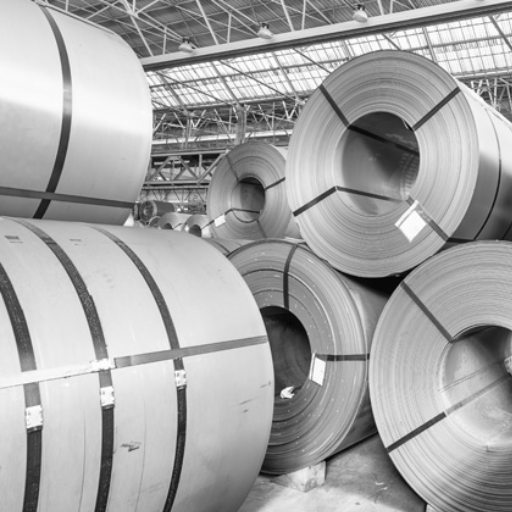
Hot rolled steel finds its way into an application where exact dimensions and smooth finish do not matter. Example applications are structural members, I-beams, rails, and sheets for construction purposes. It is cost-effective, highly durable, and made for large-scale manufacture and infrastructure.
As for cold-rolled steel, it finds its application for extremely precise measurements, good finish quality, and good mechanical properties. It is also used for automotive parts, home appliances, furniture, and engineering parts that require strength and dimensional accuracy.
Best Applications for Hot Rolled Steel
- Construction and Infrastructure
Hot-rolled steel is a suitable choice for construction work where strength and durability take precedence. It is an apt material for making I-beams, H-beams, and steel plates for structural frameworks in buildings, bridges, and highways, and it is generally accepted as able to take on loads coupled with heavy stress.
- Railway Tracks
While railway tracks need immense toughness, wear resistance, and sustainance of heavy machinery, hot rolled steel assures the best mechanical properties for manufacture of rails and related items.
- Shipbuilding and Marine Applications
Hot rolled steel is used for building hulls, decks, and other structural elements in shipbuilding. With suitable coatings to resist corrosion, it is sufficiently mechanically resistive to operate within a marine environment.
- Piping and Tubing
In the industries, hot-rolled steel is used in a wide range of pipe and tube applications to transport fluids and gases. Its dimensional tolerance suffices for those where super fine measurements are not needed, such as water transport systems, industrial ducts, and oil or gas pipelines.
- Automotive Frames and Parts
Vehicle frames, chassis, and wheel rims require the strength and structural integrity that hot-rolled steel provides, as they have to face severe applications in automotive engineering. It is otherwise not used for components requiring precision, and hence it is a more economical choice for those foundational automotive parts that go extensively into volume production.
- Heavy Equipment and Machinery
Best Applications for Cold Rolled Steel
- Automotive Components
Cold-rolled steel is widely used for manufacturing vital automotive components such as panels, structural reinforcements, engine parts, etc. Its greater tensile strength, coupled with a smoother surface, makes it less prone to fatigue and wear. For example, applications ensure safety by utilizing Class 1 cold-rolled steel sheets with yield strengths ranging up to 500 MPa.
- Appliances and Consumer Goods
Cold-rolled steels have a smooth nature and finish in thin products; industries manufacture them into most household appliances such as refrigerators, washers, and dryers, consumer electronics casing, and furniture. The even thickness and quality of surface within these steels allow for easy coatings and painting, from which wonderful and hard-wearing finishes are obtained.
- Precision Tubes and Pipes
Cold-rolled steel is preferred when tubular and pipe products are engineered for precision and require accuracy and dimensional consistency. It is vital in industries such as oil and gas, HVAC systems, and constructions. Typical cold-rolled tubes continue to be within tolerance levels of ±0.01 inches, assuring reliability and precision.
- Construction and Building Materials
High-quality cold-rolled steel means architectural uses for building facades, roofing structures, and supports; it stays in shape and strong under stress. It makes API steel a perfect candidate especially for commercial or residential construction where safety and design are critical.
- Electrical Components
Having certain cold-rolled steels present enhanced magnetic properties for electrical industries for parts of transformers, motors, and generators. Some grades such as CRGO (Cold Rolled Grain Oriented) steel are designed to reduce losses of energy for better efficiency in electrical applications.
- Office Equipment and Storage Solutions
With its high strength-to-weight ratio along with attractive surface texture, cold-rolled steel is preferred for file cabinets, desks, storage lockers, and shelving units. Durability mixed with aesthetics is its promise to be functional while providing a good-looking finish.
How Does the Cold Rolling Process Work?
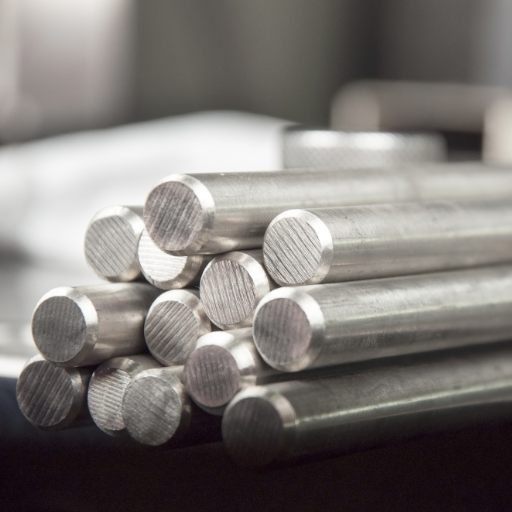
Steps Involved in Cold Rolling
- Preparation of Raw Material
The steel is cleaned and prepared for further processing, and a clean strip is fed from the coil. The material is cleaned thoroughly to ensure removal of any contamination like rust, scale, or grease that could adversely affect the condition of the surface to be rolled by chemical or mechanical treatment processes.
- Cold Rolling Process
The prepared steel is passed through a series of rollers at room temperature. In contrast with hot rolling, the procedure does not heat the metal. Instead, the rollers exert pressure on the metal to give it an elongation, thereby reducing the thickness of the steel strip to the specified dimensions. Depending on the dimensions of the stock being rolled, this action will be repeated several times.
- Lubrication and Cooling
Lubrication is continually provided to reduce the coefficient of friction between the rolls and the steel. This is important, not only to reduce wear on the machinery and rollers but also to keep the surface quality of the steel consistent and prevent any heat buildup from excessive friction.
- Precision Monitoring
The thickness, width, and flatness of the material are evaluated in real-time through the employment of advanced sensors and automated control systems, which then feedback information to the process for the strict maintenance of tolerances throughout the process, thereby reducing wastages and ensuring uniformity of the finished products.
- Annealing (if required)
Depending on the application’s requirements, cold-rolled stock may see annealing: a heat-treatment process that relieves internal stresses induced during rolling, enhancing ductility and workability, and rendering it suitable for the next step in manufacturing or shaping.
- Final Finishing Steps
Benefits of the Cold Rolling Process
- Improved Surface Finish
Compared to the hot rolling with scaling and oxidation, cold rolling offers a better surface finish. The material offers such a smooth, polished view that it is a great advantage to applications requiring a high level of aesthetics, say, for example, automotive or decorative materials.
- Enhanced Dimensional Accuracy
With cold rolling, tighter tolerances and more precise control over the thickness of the sheet can be obtained. Cold rolling readily achieves dimensional accuracies within ±0.01 mm, which is far superior to the range normally accepted for hot rolling.
- Superior Mechanical Properties
Besides cold-rolled metals becoming hard and strong due to the strain hardening caused during the process, tensile strength may increase by 20-30% over hot-rolled steels. Therefore, cold-rolled steels are used in environments subjected to some levels of stress.
- Improved Formability and Weldability
Cold rolling refines grain structure to enhance the formability of the metal, allowing it to be further deformed into complex shapes and designs. This feature is necessary in manufacturing processes like bending, stamping, or drawing. Cold-rolled materials generally exhibit good weldability, which ensures seamless fabrication and assembly.
- Efficient Material Utilization
The process limits material wastage as it tightly controls the dimensions and surface condition of the rolled product. Therefore, it ensures an absolutely minimum removal of material during the finishing stages and subsequently promotes the best utilization of the raw material for cost reduction.
What are the Common Misconceptions About Hot Rolled and Cold Rolled Steel?
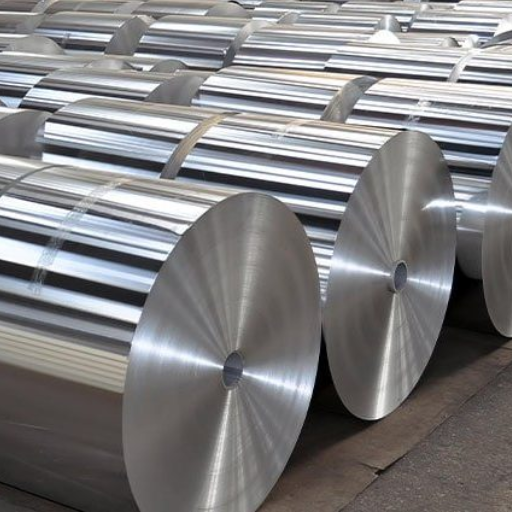
One misconception is that hot-rolled steel is weaker than cold-rolled steel. While cold-rolled steel exhibits increased strength from work hardening during its rolling, hot-rolled steel maintains its integrity and is best suited for situations that do not require precise tolerance and surface finish.
Another misconceived notion is that the two processes are used interchangeably. Hot rolling would be used chiefly for big structural components and projects where precision is not an issue, and cold rolling would ensure all applications that require tighter tolerances, better surface finish, and specific mechanical properties.
Misunderstandings about Hot Rolled Steel
A general myth behind hot-rolled steel is that it lacks structural reliability on account of its less-refined surface finish. High temperature rolling, the myth misses the point of, does enhance workability and toughness, thereby making it suitable for structural applications wherein, rather than surface appearance, beams, rails, and plates come into consideration. Of course, then is the other phase of thinking that hot rolled steel cannot satisfy tight dimensional tolerances. While this is probably true to an extent for cold-rolled steel, certain grades of hot-rolled steel are now dimensionally tolerable to quite tight limits owing to recent advances in manufacturing technology. Yet, another misunderstanding is to consider that hot rolled steel is always a cheaper option. On the contrary, hot rolled steel might be the viable choice in highly stressed environments where the focus is on cost-efficiency and strength rather than on surface finish or fine tolerances; hence, it often surpasses cold rolled steel in these matters. Such arguments point out that hot and cold rolled steel are material choices that are decided upon mainly on the specific requirements of the application rather than one being an answer to the other.
Misunderstandings about Cold Rolled Steel
Reference Sources
-
Wevolver: Hot Rolled vs Cold Rolled Steel
- Hot Rolled Steel: Processed at high temperatures (above 1700°F), it is malleable and cost-effective but has a rough surface and less precision. It is ideal for structural applications like construction beams and automotive frames.
- Cold Rolled Steel: Processed at room temperature, it offers higher strength, a smooth finish, and precise dimensions. It is suitable for applications requiring aesthetics and precision, such as automotive parts and home appliances.
-
MST Steel: Key Differences Explained
- Hot Rolled Steel: Features a rough, scaly surface and is more ductile, making it easier to form and weld. It is cost-effective and suitable for large-scale industrial applications.
- Cold Rolled Steel: Offers a polished finish, higher strength, and tighter tolerances, making it ideal for consumer products and decorative applications.
-
H&K Fabrication: A Comparison Guide
- Hot Rolled Steel: Known for its durability and stress tolerance, it is used in heavy-duty applications like automotive frames and construction. It is more affordable but has a rougher surface and less precision.
- Cold Rolled Steel: Stronger with a smooth surface, it is preferred for aerospace, automotive body parts, and food-processing appliances. It is more expensive due to additional processing.
Frequently Asked Questions (FAQs)
Q: What is the difference between hot-rolled steel and cold-rolled steel?
A: The difference between hot-rolled steel and cold-rolled steel primarily lies in the manufacturing processes. Hot-rolled steel is made by rolling the steel at high temperatures, which allows the metal to be easily shaped. In contrast, cold-rolled steel is processed at room temperature, resulting in a finer surface finish and greater strength and hardness.
Q: How does the hot rolling process occur?
A: The hot rolling process involves heating the steel to a temperature above its recrystallization point and then shaping it through rolling. This method tends to be cheaper and is often used to produce large quantities of steel products.
Q: Is hot-rolled steel or cold-rolled steel stronger?
A: Cold rolled steel is generally stronger than hot rolled steel due to the cold rolling process which enhances its strength and hardness. However, hot rolled steel is more ductile, making it easier to work with for certain applications.
Q: What are the applications of hot-rolled steel?
A: Hot rolled steel is commonly used in construction and manufacturing industries for structural components, such as beams and channels, due to its ability to be easily shaped and welded.
Q: What are the applications of cold-rolled steel?
A: Cold rolled steel is often utilized in applications where a smooth finish and precise dimensions are required, such as in automotive parts, furniture, and appliances.
Q: How does the cost of hot rolled steel compare to cold rolled steel?
A: Generally, hot-rolled steel tends to be cheaper than cold-rolled steel. This is due to the simpler manufacturing process of hot rolling, which requires less energy and processing time.
Q: Can hot-rolled steel be used in the same applications as cold-rolled steel?
A: While hot-rolled steel can be used in some applications where cold-rolled steel is used, it may not be suitable for those requiring higher precision and surface finish. The choice depends on the project’s specific requirements.
Q: What is steel made from in the context of hot and cold rolled steel?
A: Both hot-rolled and cold-rolled steel are typically made from carbon steel or other alloys. Their properties differ from the distinct rolling processes used during manufacturing.
Q: What’s the difference in surface finish between hot rolled and cold rolled steel?
A: Hot-rolled steel usually has a rougher surface finish due to the high-temperature processing, while cold-rolled steel has a smoother and more polished surface, making it more aesthetically pleasing for visible applications.

